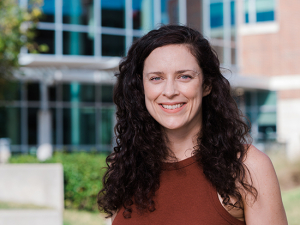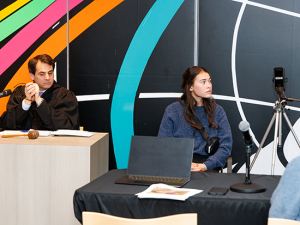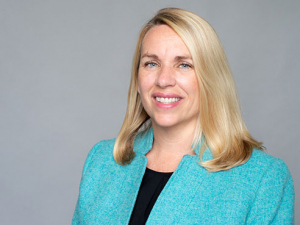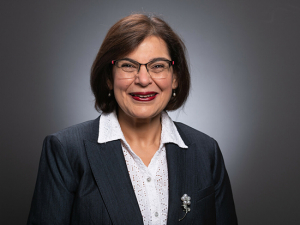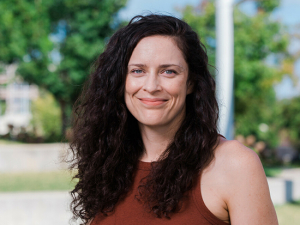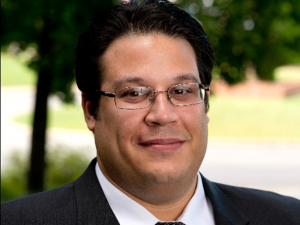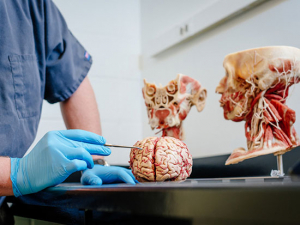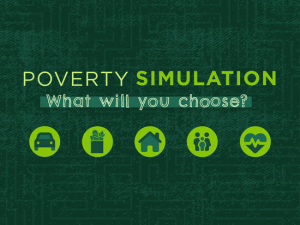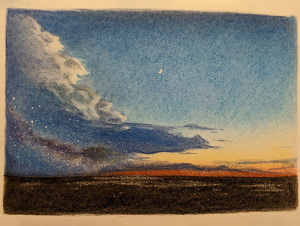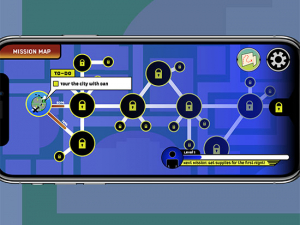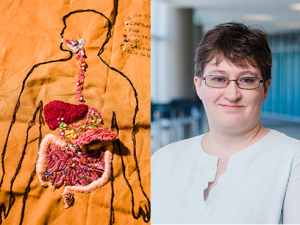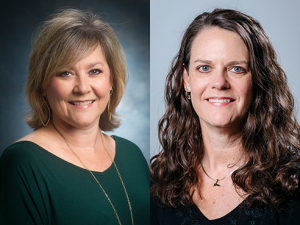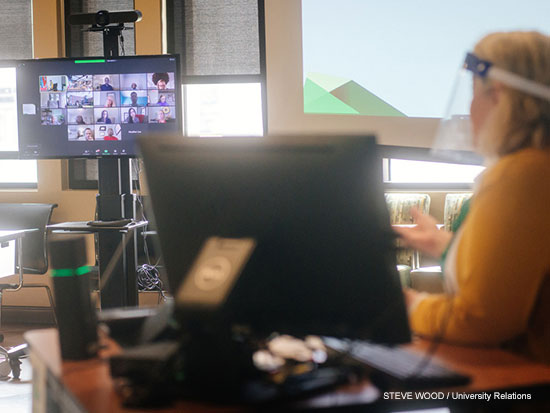 For faculty across the country, fall 2020 was the first opportunity to plan for remote teaching at scale. Spring classes had made the remote transition all of a sudden — and only for a few weeks at the end of the semester. Summer had offered an initial chance to pilot new approaches for remote and hybrid teaching formats, but many faculty don’t teach in summer. Even those who did were unsure the methods that worked with the smaller class sizes would succeed with fall classes many times larger.
For faculty across the country, fall 2020 was the first opportunity to plan for remote teaching at scale. Spring classes had made the remote transition all of a sudden — and only for a few weeks at the end of the semester. Summer had offered an initial chance to pilot new approaches for remote and hybrid teaching formats, but many faculty don’t teach in summer. Even those who did were unsure the methods that worked with the smaller class sizes would succeed with fall classes many times larger.
One particular concern was shared by many faculty: How can you build a functioning learning community when your familiar classroom persona is replaced by an inch-wide rectangle on a screen? Would they be able to establish the kinds of connection that make students willing to open up — or find their place in a larger world?
It was challenging, but not impossible, say five faculty who shared a debrief on creating community in this most unusual semester.
“I worked hard to develop a community out of all those little rectangles looking back at me” in two 60-person sections of Survey of Cell Biology, which went remote for the first time in the fall, said Samantha Giordano-Mooga, Ph.D., assistant professor in the Department of Clinical and Diagnostic Sciences. For her, successful efforts included encouraging the students to interact outside classes over Zoom through games, email encouragement and using Kahoot with its “silly kitschy music” to review content and get the students dancing in their seats during content review. By using a mixture of pre-recorded and live lectures and incorporating student teams, she was able to increase student engagement and learning and develop a cell biology community this fall.
DeReef Jamison, Ph.D., associate professor in the African American Studies Program, taught hybrid courses on Black Psychology and Introduction to African American Studies this fall. Going into the semester, he says he was concerned about how to deliver the information, engage and build rapport with his students and go about “combining all the aspects of delivery, engagement and rapport to create and build community.” Educators “talk a lot about safe spaces,” Jamison said. The classroom is “not only a safe space, but a free space — a space where students feel free and unrestricted to open up and discuss what they are experiencing.” Jamison found he could re-create that space in the hybrid model by holding on to some of his teaching traditions and letting others go.
 DeReef Jamison, Ph.D., associate professor, African American Studies ProgramOvercoming self-criticism was a struggle, several faculty said. Erika Hille Rinker, Ph.D., associate professor in the Department of Foreign Languages and Literatures, launched a project to link her students with incarcerated writers through handwritten letters. “Every step of the way I recognized how it could be better or where it was coming up short,” she said. “But overall, it was meaningful to all involved and successful by a lot of measures.”
DeReef Jamison, Ph.D., associate professor, African American Studies ProgramOvercoming self-criticism was a struggle, several faculty said. Erika Hille Rinker, Ph.D., associate professor in the Department of Foreign Languages and Literatures, launched a project to link her students with incarcerated writers through handwritten letters. “Every step of the way I recognized how it could be better or where it was coming up short,” she said. “But overall, it was meaningful to all involved and successful by a lot of measures.”
“When you are online, it is so easy to become lost and isolated,” said Samiksha Raut, Ph.D., associate professor in the Department of Biology. “You need company.” Raut had already pioneered a peer-based guidance system with her Biology Learning Assistants; this fall, she adapted their work to the remote format.
There is an awkwardness to video-based lessons, even if it is a synchronous class in which everyone is on the same Zoom call. “The environment can be distracting for students,” said Jill Clements, Ph.D., assistant professor in the Department of English. “Some of them have a hard time watching a screen and feeling that it’s participatory, not like a podcast or Netflix. I would tell them, ‘We’re not a TV show; don’t be a lurker. You are generating the class content,’” Clements said. So she experimented with a digital tool that gives students the chance to share their thoughts asynchronously on course readings online in a more natural way than the typical clunky threaded discussion board. “I was floored by the response,” she said.
Peer leaders
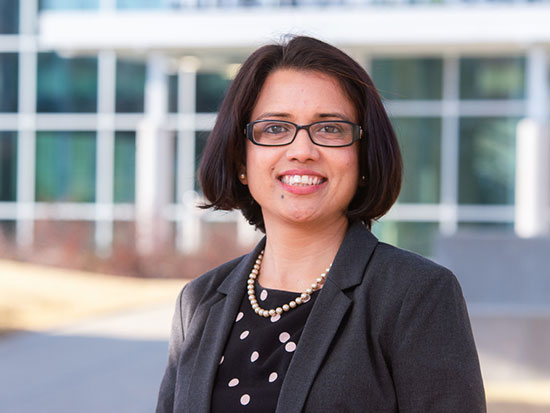 Samiksha Raut, Ph.D., associate professor in the Department of BiologyLarge-enrollment introductory biology classes such as BY 123/124, which enroll more than 200 students per semester, can either confirm a student’s interest in a STEM career or derail it. During the past few years, Raut has developed an innovative way to help, adapted from the Learning Assistant program at the University of Colorado, Boulder: She breaks the class into groups of eight to 10 students and assigns each group a peer mentor, known as a Biology Learning Assistant, or BLA. The BLAs are generally driven upper-level students who did well in BY 123 and BY 124. They answer questions, design worksheets, help with problematic concepts and, just as important, offer encouragement by building a robust yet dependable community. “Not everyone comes to college equipped,” Raut said. “I teach the BLAs how they can assist these students, and it is helping to reduce the attrition seen in these early STEM classes.”
Samiksha Raut, Ph.D., associate professor in the Department of BiologyLarge-enrollment introductory biology classes such as BY 123/124, which enroll more than 200 students per semester, can either confirm a student’s interest in a STEM career or derail it. During the past few years, Raut has developed an innovative way to help, adapted from the Learning Assistant program at the University of Colorado, Boulder: She breaks the class into groups of eight to 10 students and assigns each group a peer mentor, known as a Biology Learning Assistant, or BLA. The BLAs are generally driven upper-level students who did well in BY 123 and BY 124. They answer questions, design worksheets, help with problematic concepts and, just as important, offer encouragement by building a robust yet dependable community. “Not everyone comes to college equipped,” Raut said. “I teach the BLAs how they can assist these students, and it is helping to reduce the attrition seen in these early STEM classes.”
BLAs are themselves mentored by Raut in a separate one-credit, 400-level course called Instructional Teaching Practicum, which has been designated as the very first academic service-learning course at UAB by the Office of Service Learning and Undergraduate Research. “Teaching this course has been an immensely rewarding experience,” Raut said. The freshman students in these gateway courses “love being in these peer-led groups — there is no pressure of having a professor around and they tend to open up around other students.” Her course evaluations are filled with variations on the theme of “‘I love my BLA,’” Raut said. “I was getting a lot of ‘love,’ ‘love,’ ‘love.’ The BLAs love it, too. It’s great MCAT prep for them — you never know what you don’t know until you teach it.”
The BLAs go through rigorous training with Raut, including workshops on evidence-based teaching practices, assigned readings from current literature on pedagogy and modules explaining the importance of encouraging a growth mindset and other key characteristics that pave the way to a successful college experience. Going into the fall semester, though, “I had to get creative” to rethink what had been intensive, face-to-face training, Raut said. She brought in past BLAs on a Zoom panel to share their advice on creating connections and offered targeted training on the online platforms — including Kahoot, Padlet, Mural and Jamboard — that she was introducing to boost engagement in the gateway courses. Raut also added in new material to help BLAs talk to their peers about anxiety and depression and ensured they knew about the campus resources available to help.
“In lieu of whiteboards and face-to-face sessions for this course, I was able to adapt and utilize a combination of Google’s Jamboard with Zoom,” one of the BLAs noted. For example, the BLA might ask students to explain the working of the nephron, the functional unit of the kidney, allowing students to work together to draw out and explain the processes as a team, something that is not possible with Zoom alone. “While I am eager for a day when I may hold sessions in person again, these technologies helped to rebuild the sense of collaboration and community in STEM,” the student said.
During the semester, the BLAs met with their assigned students twice a week in Zoom calls. “The BLA course is just one credit hour, but it has an outsized impact,” Raut said. “Usually I work with 25-30 students that enroll as BLAs, but they are able to serve up to 200 students in the introductory biology classes.”
Team tactics and cheerleading
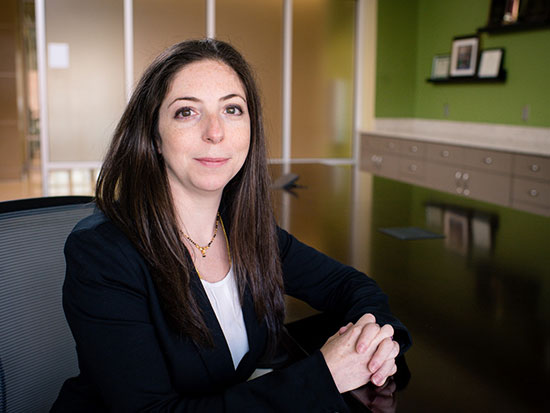 Samantha Giordano-Mooga, Ph.D., assistant professor, Department of Clinical and Diagnostic SciencesIn her cell biology course, Giordano-Mooga divided the 110 students into 21 teams. She regularly uses team activities in her in-person courses to increase engagement, challenging groups of students to explain something like the “central dogma” of molecular biology together, without referring to their notes.
Samantha Giordano-Mooga, Ph.D., assistant professor, Department of Clinical and Diagnostic SciencesIn her cell biology course, Giordano-Mooga divided the 110 students into 21 teams. She regularly uses team activities in her in-person courses to increase engagement, challenging groups of students to explain something like the “central dogma” of molecular biology together, without referring to their notes.
“There’s no way I can enforce that no-notes requirement online,” she said. Instead, each group had to meet separately each week to record a three- to five-minute video in which they answered questions based on a recent class lecture. “I added quite a bit more data interpretation from scientific articles,” Giordano-Mooga said. “Instead of describing a Western blot, I would give them a Western blot and they would have to use that data and apply their knowledge to interpret it. I had always wanted to take that approach with my in-person classes, but I was nervous because it was a massive undertaking. And it worked really well.”
Giordano-Mooga recorded brief video responses to the group videos or acknowledged their work in her main lessons. “If Team Lab Rats said something was challenging, I might say during the next lecture, ‘When I watched Team Lab Rats’s video, they said they were confused about…’ I tried to be as personal as possible, and students pick up on that. They were testing the waters to see if I was still going to be there watching.”
Watching and responding to 21 videos each week, at three to five minutes each, was time-consuming, Giordano-Mooga said. “I think for next semester I will shrink that time limit to two-and-a-half minutes at most,” she said. “But those videos were a really helpful way for me to be interactive.”
An additional requirement for each group during the semester was a team-maintenance activity. “They were required to do a fun activity together and record five minutes of that activity for me,” Giordano-Mooga said. “They played card games — Uno and things like that. I don’t know how long they stayed when the camera was off, but at least for five minutes they were chuckling and having a good time.”
Giordano-Mooga used Kahoot quiz software during her lectures for quick checks to see if students were understanding the material. “It was a great way to do a pulse of the room, and students like the instant gratification,” she said. “It has really kitschy music, and I found that if I shared the music across the screen, the students would dance. It’s another way of getting engagement. I would say, ‘I see some people dancing out there.’ I would have been goofy in person, so this was a good way to get them to realize that you can still be goofy online.” She paid $5 a month for the teacher version of Kahoot “so it would give me statistics on students who were struggling,” Giordano-Mooga said. “I would look over that and then send emails to the people at the bottom: ‘It looks like you are struggling. Do you want to come in during office hours?’”
Giordano-Mooga also made a point of sending personal emails to students in her cell biology and microbiology classes after the second and third exams of the semester. “I had been reading about having a positive growth mindset,” she said. “With COVID, it can be so easy to just start checking boxes to get through. If they improved, I would say, ‘I’m really proud of you.’ That’s what I would have said if we were there in person. I want to be the cheerleader for my students.”
Not fade away
 Erika Hille Rinker, Ph.D., associate professor, Department of Foreign Languages and LiteraturesRinker’s foreign cultures course focuses on connecting students to the unfamiliar communities all around them. Although the class is taught in many sections each semester, Rinker’s is the only one often designated as a service-learning course. In the past, that has meant partnering with Blazer Kitchen, UAB’s on-campus food pantry for students and employees, and the Language Partners program offered through INTO UAB, which pairs domestic students with international students.
Erika Hille Rinker, Ph.D., associate professor, Department of Foreign Languages and LiteraturesRinker’s foreign cultures course focuses on connecting students to the unfamiliar communities all around them. Although the class is taught in many sections each semester, Rinker’s is the only one often designated as a service-learning course. In the past, that has meant partnering with Blazer Kitchen, UAB’s on-campus food pantry for students and employees, and the Language Partners program offered through INTO UAB, which pairs domestic students with international students.
With the latter program, “my students would provide the international students with casual conversational feedback on their English usage and the topics they would talk about gave the international students the opportunity to serve as cultural ambassadors, sharing firsthand with my students about cultures I do not and cannot know as well,” Rinker said. The Blazer Kitchen connection “may seem less obvious for a course in foreign cultures, but in my section, I typically work with materials on the refugee and immigrant experience in the United States, reading books like Outcasts United and The Spirit Catches You and You Fall Down,” Rinker said. By volunteering at Blazer Kitchen, her students have a chance to witness the reality of food insecurity that they are reading about in their texts.
This fall, maintaining these service-learning options while teaching and learning in a hybrid setting with restrictions in place to guard against the spread of COVID-19, “just would not have been the same experience,” Rinker said. She considered dropping the designation, but then thought more about how she could design a project that could be completed remotely. “I had already been thinking about how to pair my class with the Liberated Voices blog found at the Jefferson County Memorial Project website,” in which incarcerated men share essays, poetry and drawings on topics such as hope, the roles played by family and history in choices they have made and, more recently, the Black Lives Matter movement and the amplified impact of COVID-19 in the setting of a maximum-security prison. (All posts are created, with pen on paper, by men incarcerated in Jefferson County’s Donaldson Correctional Facility, and submitted to Connie Kohler, DrPH, head of the Jefferson County Memorial Project’s Incarcerated Voices Committee and professor emerita in the School of Public Health.)
“These men do not have access to computers and printers and I wanted my students to have that experience as well — handwriting letters and engaging with these authors in the same way they can engage with us,” Rinker said. “Students read the blog posts and selected one that particularly resonated with them, based on something we had read or discussed in class. Then they wrote to that author — identifying and often complimenting what it was about the post that spoke to them — and shared with the authors more about the topic based on our readings and discussions, letting them inform and be informed by our class work.” The letters were collected by Rinker as a batch and mailed to and from Donaldson through the Foreign Languages and Literatures department. “We had to be careful about not forming personal relationships — they only ever used their first names and identified themselves as UAB students, with very few details about their home lives or addresses,” Rinker said.
Ultimately, “we sought to reassure the authors that their posts were being read — that although they cannot leave the confinement of the correctional facility, their work can and has,” Rinker said. “Through our letters, we hoped to encourage the authors of the blog posts to view themselves as contributing members of a more expansive physical space. That felt like a service that needed to be provided.”
Rinker hoped that the project would be a service to her students as well. “I’ve always looked at the foreign in my foreign cultures class as the things in our own community that make us feel uncomfortable, in addition to the more obvious definitions of that word in the context of my department,” she said. “We sampled from quite a few international cultures, including readings set in Ghana, Nigeria, Germany and Turkey. But as our students were coming into class in August, they were trying to re-enter the world after a long summer of stay-at-home orders and lockdown. They brought with them a sense of confinement, so it was important to me to connect them with people who truly are physically confined and let what the incarcerated men were able to share about that experience help our students see that what seemed to them to be confining maybe was so only figuratively. Their worlds were still really open.”
Valkyries and vulnerability
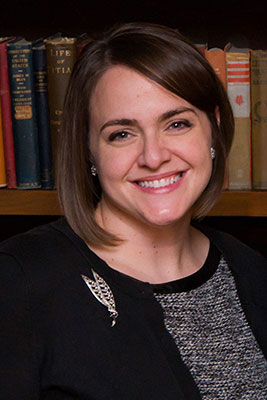 Jill Clements, Ph.D., assistant professor, Department of English“One thing I learned in March: Everything takes longer on Zoom,” said Clements, who taught British and Irish Literature I (before 1800) and Avengers and Valkyries: Gender in Medieval Epic this fall. “I have taught British lit for long enough that I know exactly what fits in a 75-minute class. But on Zoom we just can’t cover the same amount.” The format, with “people accidentally talking over each other and mic issues,” also contributes to lags in discussion, Clements said. “After seeing what happened in the spring semester, the first thing I did in planning for fall was to cut my readings by 25 to 30 percent; we slowed things down and spent more time on fewer texts. We could drill-down and really focus that way.”
Jill Clements, Ph.D., assistant professor, Department of English“One thing I learned in March: Everything takes longer on Zoom,” said Clements, who taught British and Irish Literature I (before 1800) and Avengers and Valkyries: Gender in Medieval Epic this fall. “I have taught British lit for long enough that I know exactly what fits in a 75-minute class. But on Zoom we just can’t cover the same amount.” The format, with “people accidentally talking over each other and mic issues,” also contributes to lags in discussion, Clements said. “After seeing what happened in the spring semester, the first thing I did in planning for fall was to cut my readings by 25 to 30 percent; we slowed things down and spent more time on fewer texts. We could drill-down and really focus that way.”
Clements also spent “a chunk of the summer experimenting with some brand-new-to-me tools,” she said. “One site I really liked is called Perusall. You upload a document — for me, any PDF I was asking them to read — and it lets students annotate in groups, just like you would write marginal comments in a book you read. The only people who could see your comments were the people in your group: leaving notes, asking questions, reacting to the text. The learning curve for me in setting it up was high, but in both of the courses I taught in fall, the students said they loved it. Some went out of their way to let me know how much they liked it and thought it was far better than a plain old threaded discussion board.”
Initially, she was interested in Perusall “as an accountability check to make sure that my students were at least casting their eyes over the pages I assigned,” Clements said. “But its real utility was being able to see what others thought. I am glad to have discovered it, and even when we get back to normal it may still be something I end up using.”
Faculty have a lot of control in an in-person class, and that is something they can’t recreate online, says Clements. “It was important for me that my students knew that none of this was going to work perfectly, to just be honest with them about when I was struggling or not feeling like things were working,” she said. “The part of you that’s a perfectionist has a hard time letting that go. But that was a necessary adjustment on my part.”
Setting the scene
In the minutes before his in-person classes begin, Jamison has always used music to set the scene as students enter the classroom — “music that relates to the topic being discussed that day or music that sets a particular mood or tone based on a current event taking place,” he said. He did the same for his hybrid classes in the fall, over Zoom, and found new ways to incorporate many other elements that have always worked for him in person. “Instead of thinking that I have to change what I normally do, I looked at how to continue doing what I normally do, even though the delivery mode and context was different,” he said.
Jamison used Zoom’s chat feature throughout his lectures, pausing to throw out questions and encourage discussion throughout the class period. When students posted, he would briefly recognize them by name and restate their comments. His students responded to each other, as well. “They created their own learning community by communicating with each other, without having me interrupt and critique or monitor their comments,” Jamison said. The free-flowing chat also means students “are able to communicate to each other in ways that are similar to how they related to each other when they are using social media.”
As familiar as his students may be with social media, most were new to remote learning. “I would reinforce that the Media Gallery was available, and that this gave them an advantage they did not normally have before the pandemic,” Jamison said. “They could go back and watch the class lecture, speed it up or slow it down, watch it as many times as they wanted. This was an attempt to ease the anxiety students had about this particular mode of learning.”
Jamison, like Clements, made it clear to his students that this was a new experience for everyone, himself included. “I let students know that we are all experiencing something new and different together,” he said. “Students were more likely to assist me and be engaged in class activities as we formed rapport and built community if I showed vulnerability about what we were collectively experiencing. When students recognize that their teacher prioritizes them and their learning, they respond accordingly with mutual respect.”
Changing his own mindset was important, Jamison said. “We have to let go of the idea that this process is all about the teacher. Although we should have this approach already, it is especially important during the pandemic. Not all of our students will have the camera turned on, not all of our students will talk and not all of our students will pay attention. I had to let go of that type of control in the class. Are there a few students who will take advantage of the current set-up? Yes. I had to set aside my ego and let that go.”
